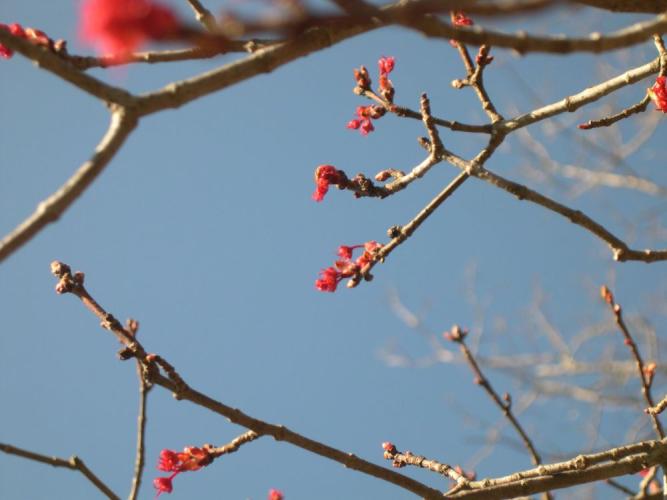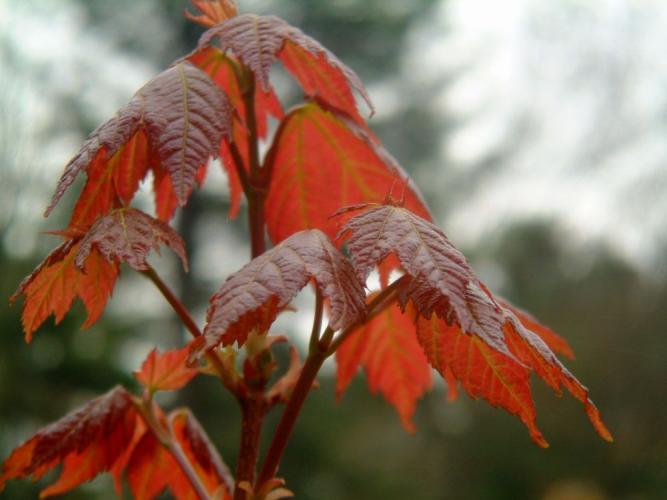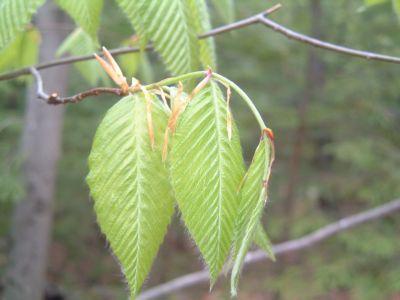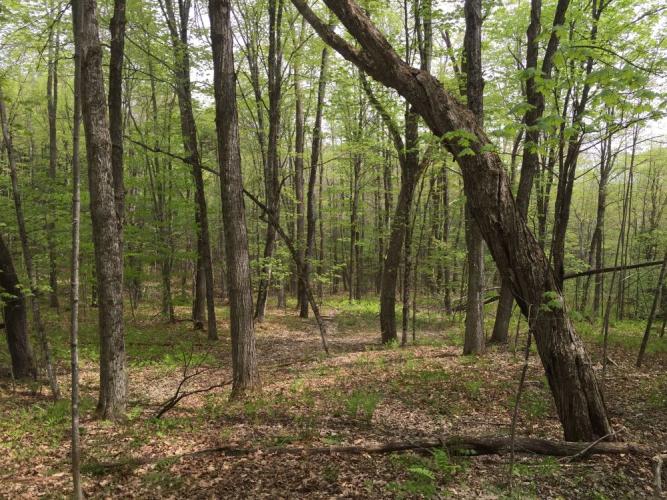Think trees are dormant all winter? Think again.

Pigment under bark and in buds fuels early season photosynthesis, before leaves emerge. Photo Dave Anderson
It’s stick season in New Hampshire; the leaves are gone, our landscape exposed; a white nivean blanket covers everything you see. Our trees are dormant. Aren’t they? To look at them, it would seem that trees aren’t doing much right now. But it turns out there’s more going on than meets the eye. The phenomenon of photosynthesis is well documented, we all know that plants use their leaves to convert sunlight into sugar, or carbohydrates. But that’s not the only place photosynthesis happens.
“Photosynthesis can happen in plant tissues other than leaves,” as Scott Ollinger, a professor of Natural Resources at UNH tells us. Though it is weather reliant, for example trees “can’t do this if the temperatures are below freezing for extended periods of time.” And those tissues other than leaves he’s talking about? He means bark.
In woody plants, a corky layer of inner bark contains chlorophyll. When sunlight can penetrate the thin outer bark of beech or white birch, or the bark of tender saplings, chlorophyll enables late-winter photosynthesis. But Scott’s also talking about the year’s new sprouts and buds. “It doesn’t generate a lot of carbohydrates, but it can be important for buds that as they’re getting ready to swell and leaf out in the spring.”

Which makes sense, being able to get started earlier can be a strategic advantage. And some plants are able to get an even larger jump on spring by photosynthesize underneath the snow pack! There is light under the snow…filtered light, but light. And plants are able to harvest that light, again once temperatures get above freezing, most notably in wetlands pitcher plants and cranberries with their red leaves. And, not surprisingly, low growing alpine plants, avail themselves of this strategy in the harsh alpine zone, where the growing season is so short.
But getting back to those photosynthesizing buds and twigs; you can see them all over the state this time of year. The buds of red maples swell, weeping willow twigs develop a yellow tinge, aspen trunks appear greener. It’s a narrow window to spot them during the time between snowmelt and when the buds burst into flowers and leaves. Scientists call that the “vernal window.”

And as Rebecca Sanders-Demott said, “how long that period lasts can have implications for how much carbon goes into or out of a system on an annual scale. The post doc research scientist at UNH is specifically talking about carbon dioxide. She’s been researching this vernal window, which typically only lasts about a week or two, but “In 2016, snow melt occurred very early in mid-February. Leaf out didn’t happen until early-May. So we had an extended vernal window.”
That extended window had different effects on different species, but both Sanders-Demott and Ollinger agree that changes to the window impact how much photosynthesis occurs over the rest of the season.
Photosynthesizing tissue, whether its buds or the year’s new shoots, are a welcome arrival for animals in the region this time of year. Yeah deer, porcupine and mice have been eking by in these winter months of scarcity, resorting to a starvation diet and consuming little more than bark to survive. So that sugar-rich tissue gives them a bit of a boost to tide them over until the season of plenty begins in earnest. Which will be here before you know it!

